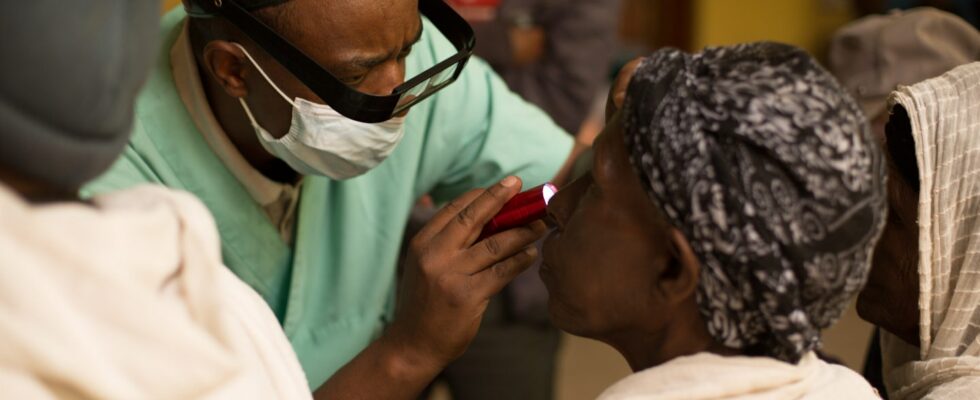The first thing you notice is that your eyes itch. A feeling that almost everyone recognizes. Many people also know the frustrating and annoying feeling of having an eyelash on their eye. That’s kind of what it feels like in the early stages of trachoma. But it gets worse. The itching ends up being constant in the infected person, at the same time as the eyelashes are gradually drawn more and more into the sensitive eye, so that the eyelashes scratch the eye every time the infected person blinks. It is not only very painful, but can result in blindness. Almost two million people have impaired vision or are blind due to the disease worldwide. It all starts with the bacterium chlamydia trachomatis – a variant of the chlamydia bacterium, which is best known from the venereal disease chlamydia. The bacteria spreads, among other things, through saliva and snot. In itself, the bacteria is just annoying, but when you have had it a couple of hundred times it starts to become dangerous. – When you are infected with the bacteria again and again, there is so much scar tissue on the inside of the eyelid that the skin pulls the eyelashes to the inside so that they scratch against the eye every time you blink, explains Amir Bedri Kello over a connection at his office in Congo. He is an ophthalmologist specializing in trachoma for the World Health Organization, WHO. Fortunately, fewer people in the world get trachoma today. 20 of the countries where the disease was previously a problem have now eliminated it as an official health problem. The South African country of Zimbabwe could be next. They have taken great steps in a short time to eliminate the disease in the country. Amir Bedri Kello says that trachoma is only a problem in one of the country’s 64 districts today. Looking back just three years in time, there was a problem in 24 of the districts. Has plagued people for many years Trachoma is a disease that affects the poorest and most remote areas the most. These are often areas where hygiene, infrastructure and food are often in short supply. At the same time, it is a disease that develops slowly. Trachoma has plagued humanity for many years, so one would have hoped that it sang the last verse. Unfortunately, that is not the case. – It affects the very poorest, says Amir Bedri Kello. This means that the fight against trachoma is a fight against poverty. One of the challenges is something as simple as infrastructure. In order to help people, you also have to be able to reach them, and there are many villages that are so remote that there are simply no roads to them. For example, rivers or mountains prevent access. This is how it looks, for example, in many places in Africa, which is the continent where most people suffer from trachoma. In 1996, the WHO launched a strategy to eradicate trachoma. In practical terms, this meant that health personnel and various organizations in the countries that experienced trachoma traveled around to the various places to map how widespread the disease was. At the same time, they have distributed preventive antibiotics to children and young people to prevent large amounts of scar tissue on the inside of the eyelids. They have taught and shared knowledge about how important face washing and hygiene are to combat trachoma. There has also been a fight for better access to clean water in the outer areas.
ttn-70
Hundreds of thousands avoid a life in the blind: Countries fight painful disease

